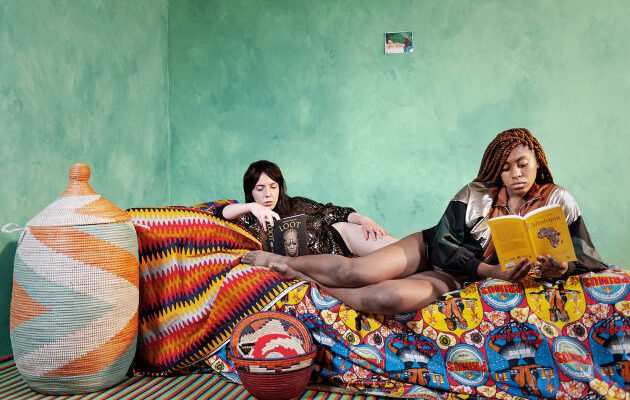Two women, one white, the other black. Accomplices, lascivious, lovers no doubt. Equal, in any case… Free digression around theOlympia, of Manet, and of The Great Odalisque, of Ingres, The White and the Black, this canvas painted by Félix Vallotton in 1913 is out of step with its time. “She is an intrigue, and a challenge”, highlights photographer Gloria Oyarzabal. In the running for the Élysée Prize, awarded each year by the Lausanne Photography Museum, the Spanish artist has made it one of the pillars of his new series, entitled “Usus fructus abusus”.
“What interests me above all is that, unlike its predecessors, Vallotton evacuates all the exotic details: no flowers, no ornaments or cats”, continues the visual artist, nourished by photography and experimental cinema. Just the suggestion of a relationship “transgressive, illicit”, between the two women. Languid, the beloved white is no longer subject to the gaze of the “white bourgeois male” orchestrated by centuries of pictorial tradition, but to that “of a woman from an “ethnic minority” who indulges in all the visual pleasures that the archetypal male thought were reserved for him”.
Over the course of her many travels and residences in Africa, from Mali to Nigeria via Ghana, Gloria Oyarzabal has lived with growing unease her “white woman’s privilege”. deconstruct it, “decenter” as she summarizes it: she relentlessly shed the stereotyped imagery born of colonialism, of a fantastical orientalism which she felt invaded in spite of herself.
A crossing of the mirror
“All this invited me to enter a complex and enriching garden. I started crossing a mirror and I fear that this crossing will last for me until the end of time”, she laughs. If she brings the two women from Vallotton back to life, it is to stage them in other situations, adorned with pearl ornaments, wigs, alternately readers or princesses. thus emerges “a dialogue around gender, race, colonialism”, she summarizes.
But these images are only part of a rich project that combines archives found at flea markets or in books, photos taken in different museums, stagings, videos and augmented reality, questioning the colonization of bodies, the confiscation of imaginations , the reversal of values. “I never embark on a subject without intense theoretical research; I feed on essays, novels, poems, films, dance, music, economic and geopolitical analyses, of course favoring local, native voices, she describes. From this very eclectic puzzle, I imagine a montage. »
You have 35.88% of this article left to read. The following is for subscribers only.
